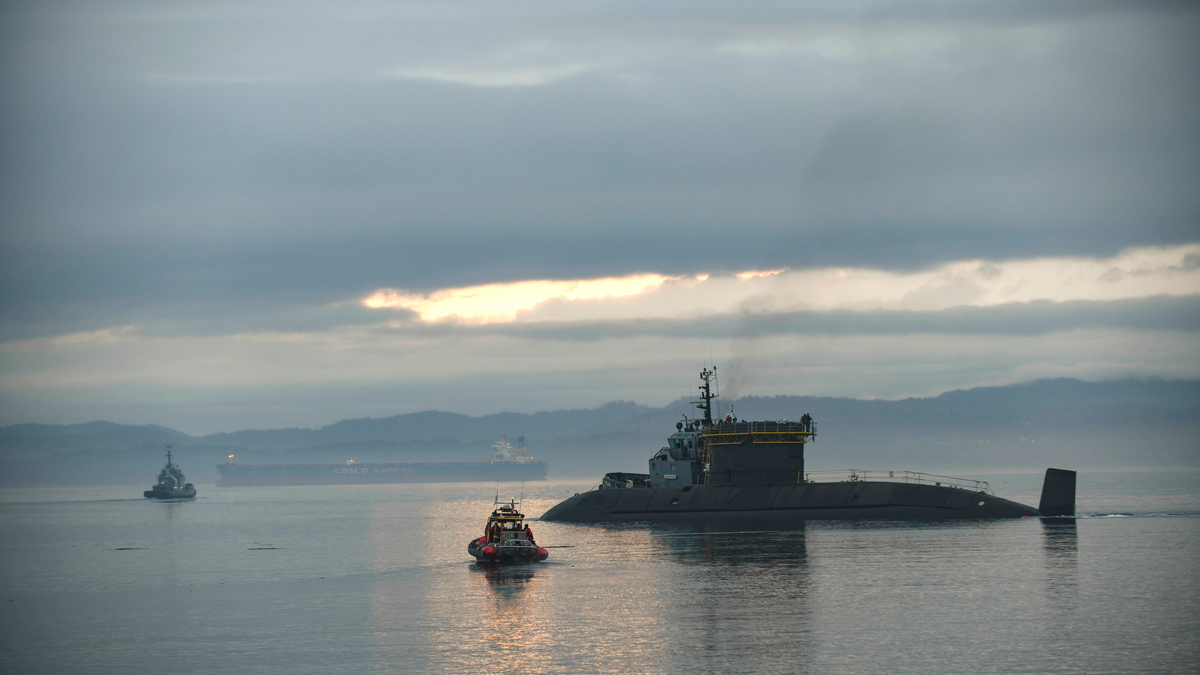ALBERTA was at communications depth receiving her daily traffic and external surveillance data. She would only be at this depth for a short time then she would effortlessly slide to a convenient depth for surveillance. The captain and the designer were hovering over the tactical plot reflecting on what had transpired since clearing Dixon Channel three weeks ago. It had been a long covert submerged transit, but they were now in their assigned patrol area.
The captain and the designer discussed the design and the operational trade-offs that resulted in ALBERTA. The captain opined that she believed that the key issues were endurance and persistence, after stealth of course. This they were able to achieve though there were challenges as many in the bureaucracy, and indeed in the Forces, continued to argue and lobby for small submarines or lesser, cheaper capability. The designer reflected that convincing the authorities that a big boat was required to store weapons, external sensors, food, fuel, spares and meet environmental regulations while providing sufficient habitability and recreational space for the crew was indeed a challenge.
ALBERTA had just deployed one of its long-range PIKE UUVs to extend her acoustic surveillance beyond her fitted systems. ALBERTA with her large displacement had been designed to carry and to deploy PIKE UUVs allowing her to conduct passive surveillance over a huge water mass making her a true strategic asset for Canada and her allies. As they were watching the progress of the PIKE the designer mentioned that one of the greatest challenges was to design- in adequate habitability and recreational facilities for the crew. The captain agreed, she indicated that one of her many major concerns was how to keep the crew fit, alert and focused during these long patrols. The biggest challenge, she opined, was to ensure that there was an onboard gym, one that could be used in all but the strictest quiet acoustic states. That they were able to achieve this, with considerable effort, proving that it not only was possible but was necessary for crew health, physical and mental, was paying dividends on this first extended deployment.
As ALBERTA departed communications depth enroute her patrol depth the discussion moved on to the boat’s waste management system, another key element endurance and persistence. To ensure stealth and to comply with Arctic regulations ALBERTA needed to store and process all forms of waste while ensuring that there was no leakage or discharge of untreated materials which may betray her location or cause pollution. Expecting a boat to store all the waste created on a normal patrol was not logical, so a special processing system was needed to neutralize the waste and contain it until it could be disposed without betraying the presence of ALBERTA. In the captain’s opinion a failure of this system meant a mission failure, consequently it was a high priority for ALBERTA’s Engineering Department.
The captain decided to walk the boat and invited the designer along. As they moved through the boat each commented on the need to adequately store sufficient food for a long deployment while ensuring sufficient variety and quality to provide the crew with nutritious and appetizing meals daily. It was a challenge but with the help of Base Food Services and the high quality of cooks embarked, selecting, storing, and preparing food for meals was a well thought out endeavour and they both observed that to date there had been no complaints. Returning to the tactical plot just as ALBERTA launched another PIKE UUV the designer observed that in the design of the boat a key issue was the ability to store sufficient critical spares pointing out that there was no “unused space” in the boat as it was all occupied by spare parts. Some of which had already been used.
At this point ALBERTA’s Executive Officer arrived with a message for the captain’s eyes only. The captain thanked the designer for the chat and proceeded to her cabin followed by the Executive Officer.

